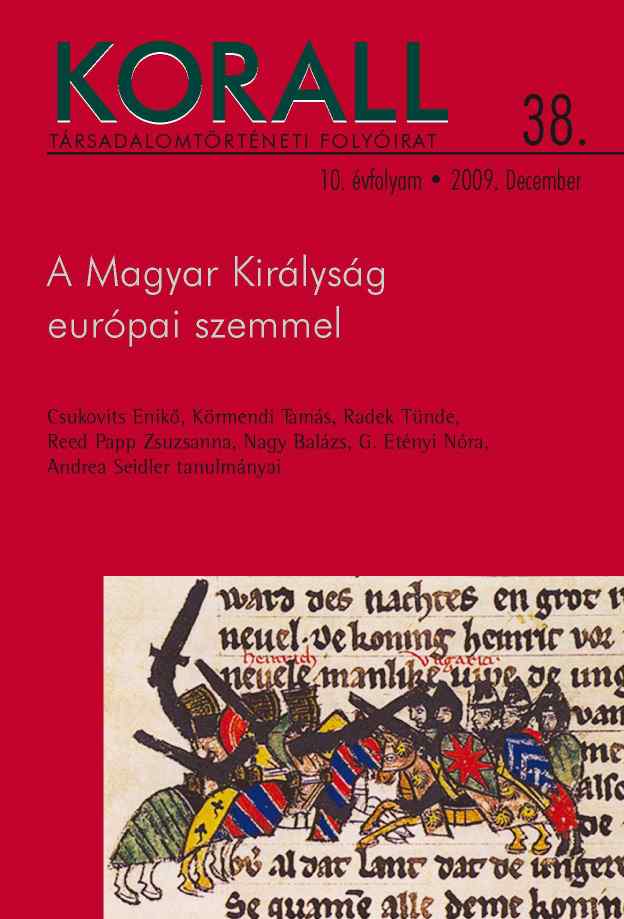A magyarság ábrázolása a nyugati-európai elbeszélő forrásokban a 13. század végéig
The Representation of Hungarians in Western European Narrative Sources until the End of the Thirteenth Century
Author(s): Tamás KörmendiSubject(s): History
Published by: KORALL Társadalomtörténeti Egyesület
Summary/Abstract: This study aims to review the process in Western Christian historiography, whereby Hungarians turned from a pagan tribe, often described by models used for Huns and Avars before them, into a member of the Christian fold. In addition, the study explores those characteristics which differentiated the Hungarians from other Christian peoples in Western historiography between the ninth and thirteenth centuries. Since the medieval European world view essentially divided peoples into Christian and pagan, the representation of Hungarians in Western sources dramatically changed after their successful conversion to Western Christianity. To reflect this change, the study is divided into two parts. The first part explores the characteristics of the representations of ninth and tenthcentury pagan Hungarians. The second part focuses on sources about Christian Hungarians between the eleventh and thirteenth century. In the former, the complete body of sources is analysed. However, in the latter, the analysis of the entire body of materials regarding the period after the foundation of the state is not possible due to the large amount of surviving sources, and thus only the main trends are demonstrated. The sources about pagan Hungarians use the commonplaces describing Huns and Avars in annals and chronicles written centuries before: they emphasise the savage and cruel ways of Hungarians, and at most their skills of warcraft. This is not surprising considering the crippling damages that the raiding Hungarians caused in the Western population and church. The sources mentioning Christian Hungarians contain significantly fewer generalising references, which are explained by three causes in this study. 1. In medieval Western historiography, peoples of Latin Christendom were considered to belong in the same community, and are characterised exactly by this common affiliation alone, without adding further distinguishing details. 2. After converting to Christianity, Hungarians, earlier known only from military conflicts, developed increasingly complex ties with Western European regions. This brought about a better flow of information, which had a significant impact on the increasing precision (and decreasing generalisation) of Western chroniclers about the history of Hungarians from the eleventh century onwards. 3. In medieval Western historiography, conflicts between Western Christian communities were simplified to struggles between one warring party fighting for universal truth and the enemy of these universal values. In these cases, the descriptions were influenced by the political agenda of the chroniclers, rather than the contemporary image of Hungarians (if there was one at all). The materials examined in both parts of this study have one thing in common: Hungaria
Journal: Korall - Társadalomtörténeti folyóirat
- Issue Year: 2009
- Issue No: 38
- Page Range: 30-46
- Page Count: 17
- Language: Hungarian

